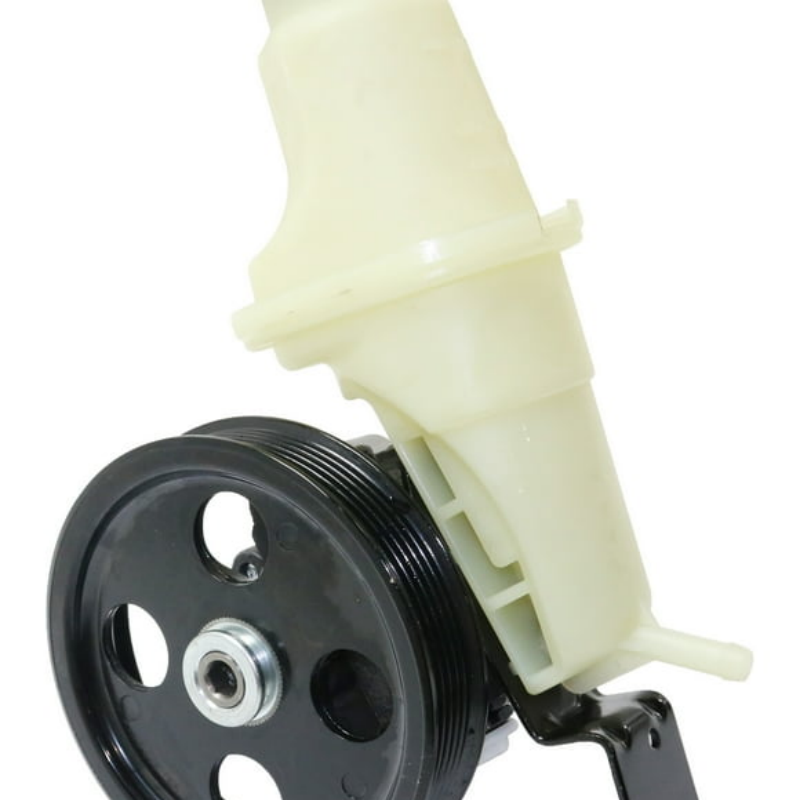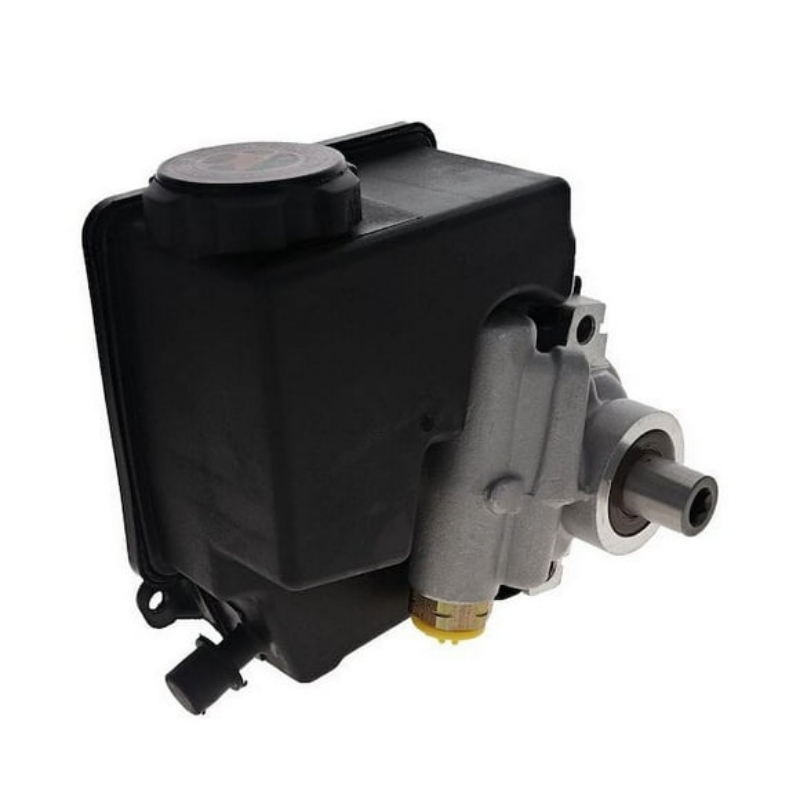How Often Should You Change Power Steering Fluid? A Guide
Introduction
Maintaining a vehicle is a commitment that goes beyond just regular oil changes and tire rotations. One component that requires attention is the power steering system, particularly the fluid that keeps it functioning smoothly. Many drivers may ask, “How often should you change power steering fluid?” This is a crucial question, as failing to maintain power steering fluid can lead to more significant problems with the steering system, resulting in decreased performance and increased repair costs.
Power steering fluid facilitates the hydraulic pressure needed for efficient steering, helping soak up heat and prevent wear on parts. In this comprehensive article, we will delve into the importance of power steering fluid, guidelines on how often to change it, signs that indicate a change may be necessary, differences between various types of fluids, and detailed steps on how to change it yourself if you choose to do so. By the end, you will have a solid understanding of the role of power steering fluid in vehicle maintenance.

Understanding Power Steering Fluid
Before determining how often you should change power steering fluid, it’s beneficial to understand what this fluid is and why it’s essential for your vehicle’s functionality.
What Is Power Steering Fluid?
Power steering fluid is a specialized hydraulic fluid designed for use in power steering systems. It enables the driver to control the steering of the vehicle with minimal effort.
- Composition and Properties: Power steering fluid often contains additives to enhance its performance, including anti-wear agents, rust inhibitors, and viscosity modifiers. These properties help maintain the fluid’s effectiveness over time.
The Function of Power Steering Fluid
Power steering fluid serves multiple critical purposes in the steering system:
- Hydraulic Pressure Generation: It transmits hydraulic pressure from the pump to the steering gear, allowing for easier steering input.
- Lubrication: The fluid lubricates the moving components in the system, helping reduce friction and wear over time.
- Heat Dissipation: Power steering fluid helps to dissipate heat generated during operation, preventing overheating and maintaining optimal performance.
Types of Power Steering Fluid
Different vehicles may require specific types of power steering fluid. Here are a few common types:
- ATF (Automatic Transmission Fluid): Many vehicles use ATF as power steering fluid, especially older models.
- Synthetic Power Steering Fluid: Designed for high-performance and modern vehicles, synthetic fluids offer superior thermal stability and lubrication.
- Manufacturer-Specific Fluids: Some car manufacturers recommend specific type of fluids that may contain unique additives tailored to that brand’s power steering design.
Understanding the role and types of power steering fluid will help you appreciate the importance of maintaining adequate fluid levels.
Signs That You Need to Change Power Steering Fluid
Recognizing the signs that indicate you need to change your power steering fluid is crucial for maintaining the health of your vehicle’s steering system.
Difficulty Steering the Vehicle
If you notice that your steering feels unusually stiff or requires more effort than it used to, this may be a sign that your power steering fluid is old or contaminated.
- Potential Causes: Inadequate fluid levels or degraded fluid can lead to reduced hydraulic pressure, affecting steering performance.
Unusual Noises
Another indication that you may need to change your power steering fluid is the presence of strange noises when you turn the steering wheel.
- Common Noises: A whining or groaning noise may suggest that the power steering fluid is low or that it has become contaminated.
Fluid Color and Consistency Changes
Power steering fluid is typically bright red or pink when new and fresh. Over time, it may darken and even become murky.
- Checking Fluid Condition: If you notice that the fluid is dark or has a burnt smell, it’s time for a change. Fresh fluid should always look clean and vibrant.

Bubbles or Foam in the Reservoir
If you see bubbles or foam in the power steering fluid reservoir, this could indicate aeration, which can negatively affect fluid performance.
- Implications of Aeration: Bubbles can reduce steering efficiency and lead to components becoming damaged due to inadequate lubrication.
Leaking Fluid
If you observe any fluid pooling on the ground beneath your vehicle, it may indicate a leak in your power steering system.
- Addressing Leaks Promptly: Leaks not only signify that you need to replace fluid but also may point to issues with seals, hoses, or the pump that require immediate attention.
Dashboard Warning Lights
Some modern vehicles have dashboards equipped with sensors that monitor various fluid levels, including power steering fluid.
- Warning Indicators: If a warning light appears on your dashboard, it’s essential to consult your owner’s manual immediately to address the issue.
Recognizing these signs will help you maintain the health of your power steering system and determine when it’s time for an oil change.
How Often Should You Change Power Steering Fluid?
The question of how often should you change power steering fluid does not have a one-size-fits-all answer, as it can vary based on several factors.
General Recommendations
- Standard Intervals: Most manufacturers recommend changing the power steering fluid every two to three years or every 30,000 to 60,000 miles. However, it’s essential to consult your vehicle’s owner manual for specific recommendations based on the make and model.
Factors Affecting Change Frequency
- Driving Conditions: If you regularly drive in challenging conditions (e.g., heavy traffic, extreme temperatures, or off-roading), you may need to change the fluid more frequently.
- Fluid Quality and Type: Using high-quality, synthetic power steering fluid may extend the interval between changes compared to conventional fluids.
- Vehicle Age and Condition: Older vehicles or those with high mileage may require more frequent fluid changes due to wear in the power steering system.
Manufacturer Guidelines
Always consult your manufacturer’s guidelines for the most accurate and relevant recommendations regarding fluid changes. Using manufacturer-specific fluids may also enhance performance and longevity.
How to Change Power Steering Fluid
If you’ve determined that it’s time to change your power steering fluid, you can perform the procedure at home or have a professional do it. Here’s a step-by-step guide on how to change the fluid:
Gather Your Supplies
Before starting the process, ensure that you have the necessary tools and supplies:
- New Power Steering Fluid: Refer to your owner’s manual to choose the right type.
- Siphon Pump: This tool is useful for removing old fluid from the reservoir.
- Rags or Towels: For cleaning up spills and wiping down components.
- Funnel: To help pour new fluid without making a mess.
- Safety Glasses and Gloves: Always prioritize safety when working on your vehicle.
Step-by-Step Process
- Prepare the Vehicle: Ensure that your vehicle is parked on a level surface and the engine is off. Set the parking brake for added safety.
- Access the Power Steering Reservoir: Locate the power steering fluid reservoir, which is typically found near the engine bay.
- Remove Old Fluid: Using a siphon pump, carefully extract the old fluid from the reservoir. Dispose of it according to local waste management guidelines.
- Clean the Reservoir: Wipe down the inside of the reservoir and the cap with a clean rag, ensuring no debris contaminates the new fluid.
- Add New Power Steering Fluid: Using a funnel, pour the new power steering fluid into the reservoir until it reaches the appropriate level indicated on the dipstick or reservoir markings.
- Check for Leaks: After filling the reservoir, start the engine and turn the steering wheel from lock to lock several times. This action helps circulate the new fluid and purges air from the system.
- Inspect Fluid Level: Turn off the engine and allow the fluid to settle for a moment before checking the fluid level again. Add more fluid if necessary.
- Dispose of Old Fluid: Ensure that you dispose of the old power steering fluid properly, taking it to a recycling center or automotive shop that accepts used fluids.
Regular Monitoring
After changing the fluid, keep an eye on the reservoir level and condition. Monitor for leaks, noises, or any other warning signs that indicate issues within the power steering system.

Conclusion: The Importance of Maintaining Power Steering Fluid
In conclusion, understanding how often you should change power steering fluid is essential for every vehicle owner. Regular maintenance not only ensures the smooth operation of your power steering system but also contributes to the overall health and longevity of your vehicle.
By recognizing the signs that indicate a need for fluid changes, understanding the recommended intervals. And knowing how to change the fluid, you take an active role in your vehicle’s maintenance. Keeping your power steering fluid fresh and at the correct level enhances steering performance, provides comfort during driving, and prevents potential costly repairs down the line.
An investment in consistent care for your power steering system translates to a better driving experience, safer handling, and peace of mind on every journey. Make power steering fluid maintenance a priority, and enjoy the benefits it brings.
